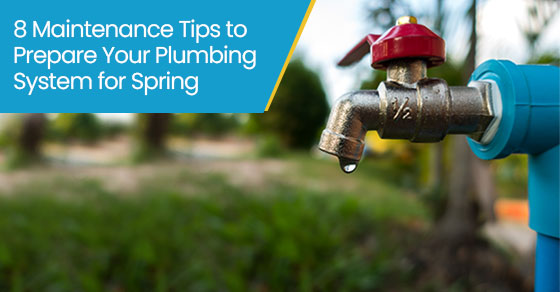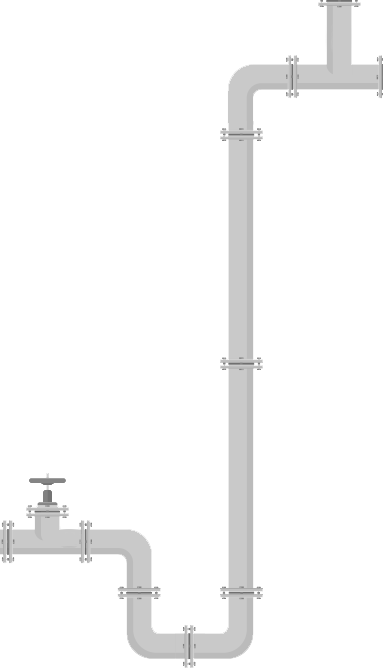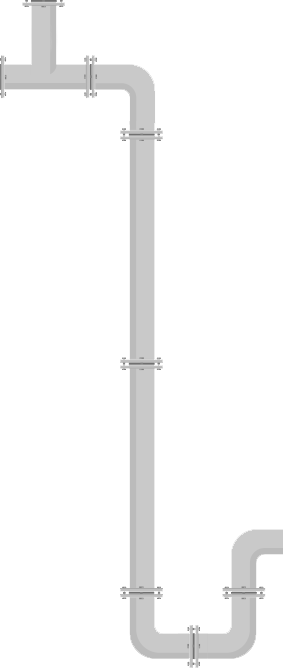8 Maintenance Tips to Prepare Your Plumbing System for Spring
Posted by Jason Genah on 08-04-2024

Spring is such a fantastic time, with the winter snow melting away and new life bursting forth in bright colours and green grass.
Unfortunately, with the spring thaw also arrives the possibility of leaking pipes. To prevent this happening, you should check your plumbing system and do some basic maintenance to keep things in working order.
1. Check for sweat on the pipes
Most of us sweat when we perform hard or extensive manual labour, but sweating on your pipes could mean that you need to call your plumber.
Any pipe that is sweating or has condensation building up can indicate a problem about to happen or in the process of happening. Check the joints for signs of leaks and any water staining on the floors or walls.
Once you have inspected the area, reach out to your local plumber in Toronto and have them come and reseal the joints or replace damaged pipes.
2. Turn your valves
Turning off the water to a section of the home or the entire home in an emergency can be the difference between a minor repair costs and larger, more expensive fixes.
Knowing where the valves are is essential, and you can even label them for quick identification. However, being able to turn them with ease is vital.
If the valve turns without a problem, you are good to go. If it takes two hands to turn, though, or there are signs of water damage, they should be replaced. These valves must operate at any given time, so any force needed to turn them (or other signs of damage) should be addressed as quickly as possible.
3. Flush your water heater
Your water heater has most likely been working overtime in the winter, with people taking longer hot showers and possibly more laundry loads. Therefore, it could use a flush.
People living in hard water areas will find that their water contains more minerals and deposits than others. These can build up in your heater and cause problems.
When the heater doesn’t need to work overtime in the spring, flush the system to remove this build-up and keep it running smoothly throughout the warmer months. You should also check the TPR valve and turn it to release any pressure that has built up inside.
4. Look for leaks
Checking all your pipes and taps for leaks can seem tedious, but any sign of water damage, rust, or leaks can save you time and money later.
Look in cupboards under sinks, behind toilets, throughout the main floors, and in the basement. You can also run the shower to see if water appears where it shouldn’t.
Water staining can mean that there has been a leak in the past or a slow leak that comes and goes. Regardless, this should be addressed. Even if you monitor it and call a plumber later if it worsens, you will at least know where a potential issue could be.
5. Toilet leaks
You use the toilet every day, so you might think that you would notice a leak right away. However, slow leaks can happen without you noticing until they become bigger and more problematic.
For every toilet in the house, including the basement, add a few drops of food colouring, or you can purchase a special dye from a hardware store to place into the water tank of the toilet. Then, flush the toilets.
If there are any leaks, you will see the coloured water emerge, and you can identify the problem area quickly. As slower leaks can take their time to become visible, flush a couple of times, and then check back in an hour to see if any colour staining appears.
6. Examine your lawn
As the snow melts and your lawn starts to revive, it should be lush green and dry. If you have gravel in place of grass, it should be even and decorative, not filled with small rock pools for bugs to live in.
While some water tables are higher than others, depending on your area, you should still have the water soak into the soil and away from your yard. Therefore, any water pooling is most likely caused by a burst or leaking underground pipe and should be dealt with immediately.
7. Outdoor faucets
Depending on the size of your property, you may have one or more outside faucets. All of these should be checked to ensure that they haven’t frozen over the winter months and still operate as intended.
Look for watermarks, dripping, or a loose pipe. Slowly turn the tap to ensure you can still operate it and that water comes out.
You don’t want to do this too fast in case there is a burst pipe or a build-up of pressure. This could rip the faucet out of the wall, cause water to gusher at an alarming rate that you can’t turn off, and damage the walls.
8. Gutter screening
Your downpipes and gutters are not always considered part of the plumbing system, as we tend to think of plumbing as pipes, toilets, showers, and faucets.
However, as all pipes lead to the drains, your gutters are just as important. Make sure that they are cleaned and free of all foliage and debris that can build up over winter and that the pipes are in good condition.
You can purchase screens and mesh to place over the tops to prevent this debris from building up. You can also install special mesh screens to help cover outside drain holes to reduce the amount of leaf litter that can clog them up.
Call the Plumbing Professionals
Drain King Plumbers are here for all your plumbing needs, serving the GTA for problems ranging from small leaks to pipe insulation and everything in between.
Whether your tap is dripping, or your shower is malfunctioning, call us at 833-983-5663 or go online and let us know what your concerns are. Our expert and friendly team will fix your plumbing issues in no time.




